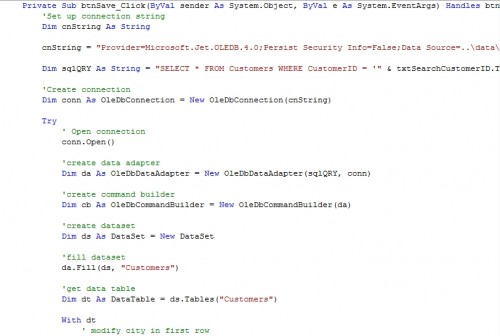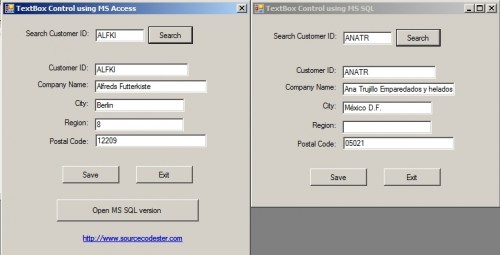Primitive types of Java
There are eight primitive types of data that are defined by java:
- Byte
- Short
- Int
- Long
- Char
- Float
- Double
- Boolean
The above eight types can be put into four different groups
There are eight primitive types of data that are defined by java:
The above eight types can be put into four different groups
Java was developed in the year 1991 and was formally announced in 1995. Basically, java is based on C and C++. The character of java is inherited from both of these two languages. Syntax of java is related to C and Object Oriented facial from C++.
Now java is used to create web sites including interactive content, iphone applications, applications for devices like pagers and cell phones etc.
Key Features of Java
This tutorial is part of Database Programming Made Easy Series.

In this tutorial you'll learn how to retrieve and save data back to the database using Datasets and Data Adapters.
Microsoft Access database and Microsoft SQL Server sample is provided.
This tutorial is part of Database Programming Made Easy Series.

In this tutorial you'll learn how to retrieve and save data back to the database using Data Readers and ExecuteNonQuery.
Microsoft Access database and Microsoft SQL Server sample is provided.
This tutorial is part of Database Programming Made Easy Series.
In this tutorial you will learn in different ways on how to retrieve and save data using textbox control.
First we retrieve the data using Data Readers and save it back using ExecuteNonQuery.
Second we will use Dataset and Data Adapter. The same output but with different approach.
Previous: Windows Forms
This tutorial is part of Database Programming Made Easy Series.
Without Windows Forms your application may look like a DOS application, running in a black and white screen without a Graphical User Interface.
This tutorial will discuss on how to use different controls like TextBox, Label, ComboBox, Button, CheckBox, and finally the ListView Control to access data from our database.
This tutorial is part of Database Programming Made Easy Series.